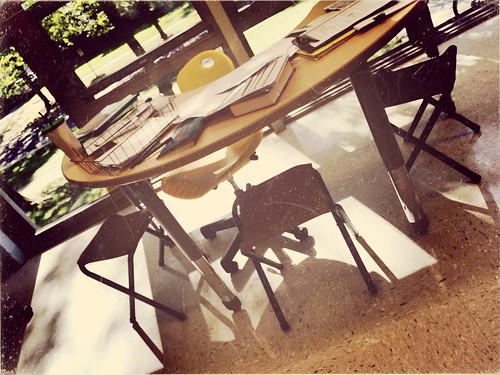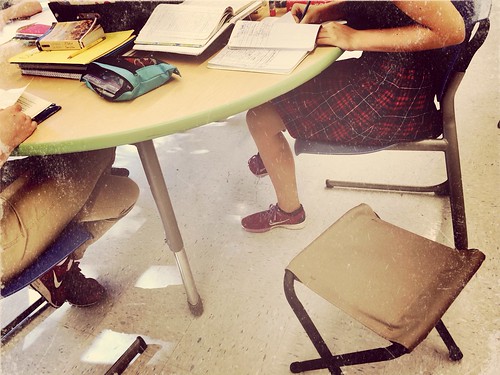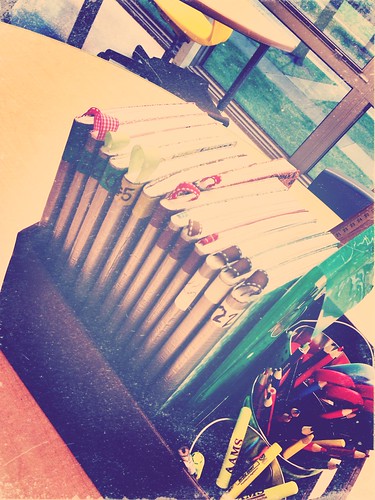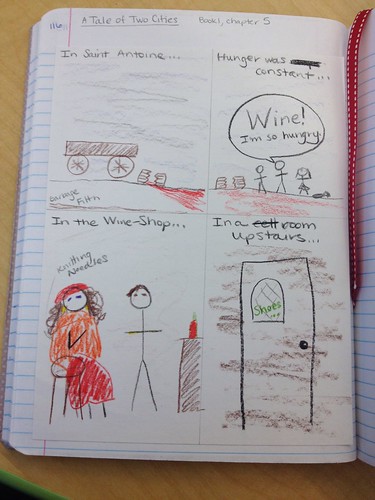Last year I was looking for something to sit on while working with students, and I didn't want to drag around one of our surprisingly heavy student chairs. I decided to try a $12 camping/fishing stool that I ordered online. I didn't always remember to pull it out last year, so this year I permanently placed it next to my tech setup near the SmartBoard, and we use it all the time.
 |
| Need to sit down to type something on the SmartBoard? Use the camping stool. |
The great thing about using the camping stool instead of a podium or a student desk is that I didn't want a permanent feature in front of the SmartBoard. The SmartBoard isn't the center of our classroom, and I didn't want to be pulled to constantly teach from that location.
I love the tables in my classroom, and the camping stool makes it easy to join a group of students, or just meet with one, even if every chair is filled. In the past, I had twice as many chairs as I did students so that every student could have a seat in home room; now I have only four chairs per table, and the stool moves around to create an extra seat when I want to join a table.
 |
| Need to meet with a small group? Camping stools. |
(I'm embarrassed by the state of this table. In my defense, it gets cleared off each day. This is mid-class.) Obviously, our stools have multiplied. Once per week the entire 8th grade (26 students) has class together in this room, and sometimes they have lunch in here, so we needed to be able to seat 26 without cluttering up the room with extra chairs. I usually keep four stools in the room (one in front and three at this table), but we've had them all out since we've been eating lunch in the classrooms a lot. Yesterday during reading time, a girl lined four of them up like an army cot and stretched out to read. Eighth graders are funny.
We're all big fans of our $15 Adirondack chair (it's very comfortable), and we have one yoga ball/stability chair that causes a minor stampede at class changes, but this year's most valuable classroom chair definitely goes to the camping stool. That was $12 well-spent.










